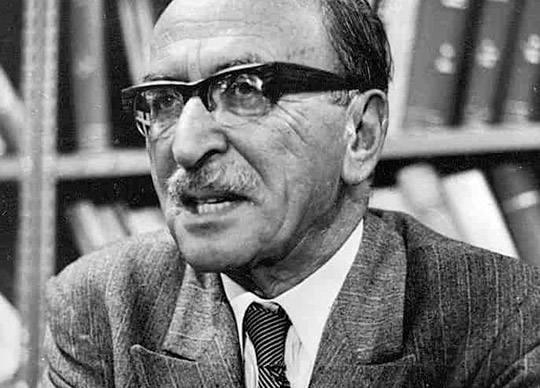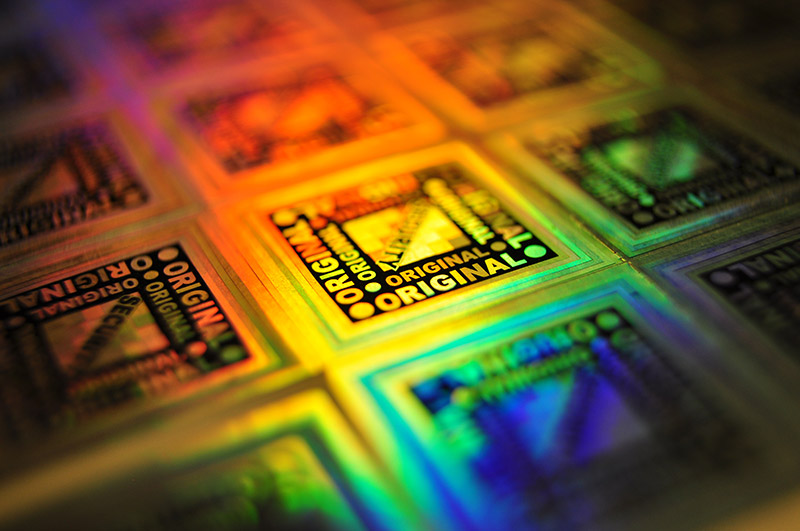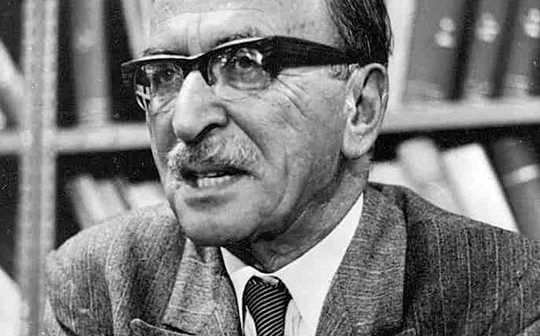
Written by Dr Paul Dunn, Chair of the International Hologram Manufacturers Association.
When considering the role that holography has played in the engineering, technology, art and commercial landscapes, which of the milestones in its development are worthy of celebrating?
The obvious place to start might be the 1971 Nobel Prize in Physics that was awarded to Dennis Gabor ‘for his invention and development of the holographic method’, but to understand how Prof Gabor first invented and then developed the idea of ‘wavefront reconstruction’ you have to go back 24 years prior to the award and his efforts to improve the resolution of electron microscopes.
The invention of holography, as a concept, was in 1947 while Gabor was working for the British Thomson Houston (BTH) company on the development of electrical lighting systems and the improvement of electron microscopes. It led to a patent by BTH (GB685286[i]) in December 1947 – which makes 2022 the 75th anniversary of its granting.
According to the patent, the invention comprised ‘a means for producing photographically with rays of a very short wavelength, e.g., an electron beam, a diffraction diagram of the object which is to be magnified, the diffraction being carried out in such a manner that the diagram is formed substantially by interference of diffracted wavelets with primary undiffracted waves from the same source’.
The idea of forming an interference pattern between waves carrying information from an object (the object or signal beam) and waves directly from the wave source (the reference beam) would lay the foundation for Gabor’s later work on holographic imaging.
In his work on improving the performance of electron microscopes, the interference pattern was recorded photographically ‘and a means for producing from the record with rays of a wavelength longer than that of the waves for producing the diffraction diagram an image of the object which is magnified at a ratio equal to the ratio of the two wavelengths.’

In essence, Gabor was not trying to capture the signal beam purely as a record but as a method of magnifying it without introducing distortions or aberrations.
Although Gabor’s work predated the invention of the laser by some years, he was aware of the importance of temporal and spatial coherence of the wave source, stating that ‘the radiation preferably consists of a monochromatic beam of electrons.’ But it wasn’t until the invention of the maser (microwave amplification by stimulated emission of radiation) and the first working lasers in the 1960s that the possibility of true three-dimensional viewable holograms became a reality.
Holographic methods, and specifically the concept of using a reference wave to obtain amplitude and phase information of the light passing through a sample, is still used today in several microscopy techniques.
Digital holographic microscopy distinguishes itself from other microscopy methods by not recording the projected image of the object itself. Instead, the light wavefront information originating from the object is digitally recorded as a hologram, from which a computer calculates the object image by using a numerical reconstruction algorithm. The image forming lens in traditional microscopy is thus replaced by a computer algorithm.
Other closely related microscopy methods to digital holographic microscopy are interferometric microscopy, optical coherence tomography and diffraction phase microscopy. Common to all of these methods is the use of a reference wave to obtain amplitude and phase information. The information is recorded on a digital image sensor or by a photodetector from which an image of the object is reconstructed by a computer. In traditional microscopy, which does not use a reference wave front, only intensity information is recorded and essential information about the object is lost.
It’s interesting to note that the Nobel Prize was awarded to Prof Gabor as the sole Laureate. Even in 1971, it was common for a team of researchers to be recognised for their collaboration, and nowadays all fields of science are so multidisciplinary that it is usual for the recipients of the prize to span several teams.
That isn’t to say that Gabor was a loner or shunned working collaboratively. In 1968, he participated in the establishment of the Club of Rome, whose declared goal is: ‘sharing the responsibilities for the future of humanity…’
The truth is that he was a polymath and by the time he joined BTH he had already assembled much of the knowledge of light and radio waves that he would use in developing the concept of holography. For while the basic science of diffraction theory and the photographic process were known in the 1900s, it was not until Gabor had his key idea in 1947 that the critical step was recognising that ‘light could behave just like a coherent radio wave’.
Nowadays, we see the term ‘holography’ applied to a whole range of heightened reality images that do not use wavefront reconstruction, but rather deploy techniques that provide enough visual cues to convince the viewer that an object or person is present – when they are not. We would like to think that rather than turning in his grave (he died in 1979), Dennis Gabor would salute the ingenuity of the engineers and inventors making these displays.






